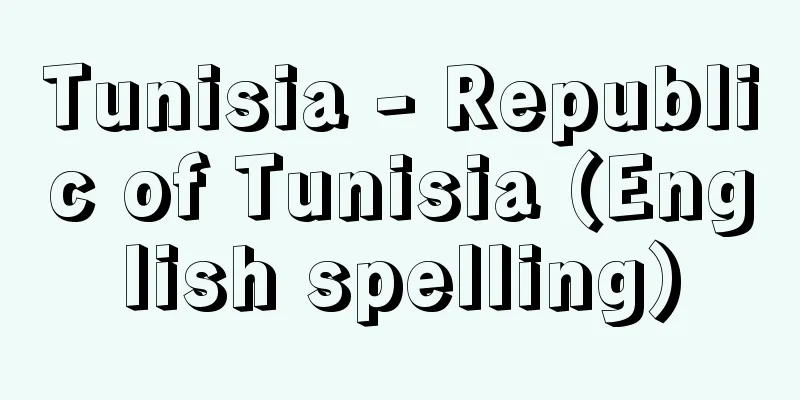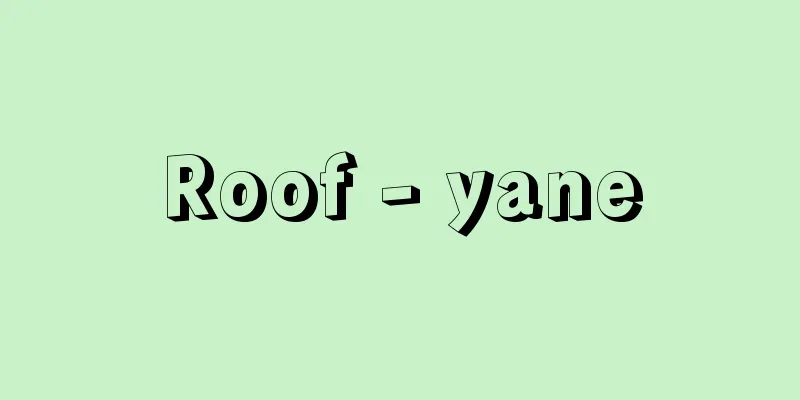Tunisia - Republic of Tunisia (English spelling)

|
Located almost in the center of the Mediterranean coast of North Africa, this seahorse-shaped country is located across from the Italian island of Sicily. Its official name is the Republic of Tunisia, Al-Jumhuriya at-Tūnus. It has an area of 163,610 square kilometers, and a population of 9,910,872 (2004 census), 10,126,000 (2006 estimate), and 10,273,000 (2009 estimate). It borders Libya to the east and Algeria to the west. The southern part of the country is part of the Sahara Desert, and most of the population is distributed along the northern coast. The ruins of Carthage can be found in the eastern suburbs of the capital, Tunis (population 745,000, 2007 estimate), and the northern region has long been known as the granary of Rome, and even today it produces wheat, fruit trees, vegetables, and olives. Blessed with tourist resources such as large-scale ancient ruins, bright sunshine, palm forests and white sandy beaches, the cobalt blue Mediterranean Sea, white houses and desert oases, and with many ruins registered as UNESCO World Heritage Sites, it attracts many tourists from Europe. In addition to agriculture and tourism, the country has been industrializing in recent years through the production of oil and natural gas, and its per capita gross national income (GNI) is $3,290 (2008). [Hiroshi Fujii] NatureterrainOverall, the country is blessed with wide plains and hills, and is blessed with arable land. The Atlas Mountains, which run east to west along the western Mediterranean coast of North Africa, become lower as they go east, and in Tunisia, the mountains turn into hills. The Sahel Plain stretches along the east coast. The highest peak is Mount Chambé (1,544 meters), which is close to the border with Algeria. South of the mountains are lowlands, with salt lakes such as Lake Garsa and Lake Jerid, the latter of which is below sea level. The southern part is a desert, consisting of plains and the low Ksour Mountains. Most of the rivers are wadis (dried-up rivers) that only flow when it rains, and the only one that has water throughout the year is the Mejerda River, which originates in Algeria. [Hiroshi Fujii] climateThe northern part of the country has a Mediterranean climate with dry summers and rainfall in winters, but the amount of rainfall decreases as you go south, resulting in a steppe climate. Furthermore, south of the line connecting Gafsa and Skira, the desert climate has an annual rainfall of less than 150 mm, and the reddish-brown earth spreads out. In the desert, there are oases that use spring water, such as Tozeur and Nefta. In the northwest, there are places such as Ain Draham that have an annual rainfall of 1,500 mm, but overall the rainfall is low, which places a great constraint on agriculture and industrialization. In winter, the southern part is warm, but the northern part, especially inland, can get cold and snowy. In summer, the temperature is high and dry overall, and the heat in the Sahara Desert in the south is unbearable. In the Matmata Mountains, people dig deep pits to avoid the heat, and build underground dwellings around the bottom of the pits. From spring to summer, hot, sandy winds called siroccos blow from the Sahara Desert. Because the country receives little rain, levees and drainage channels are not well developed, and the occasional heavy rains cause flooding and serious damage. [Hiroshi Fujii] GeographyThe country is divided into three regions: the northern Ter region, which has a Mediterranean climate; the steppe region, which has an annual rainfall of 200-400 mm; and the southern Sahara region, which has a desert climate. The northern Ter region is the richest region, accounting for one-sixth of the country's land area, but is home to 60% of the population. In the coastal plains, hills, and Mejerda River basin, commercial crops such as wheat, grapes, citrus fruits, vegetables, and olives are cultivated, as well as livestock farming. Rukef, Souk el Alba, Souk el Khemis, Matour, and Beja are the main cities in the agricultural region. The capital, Tunis, is the political, economic, and cultural center of the country, and Bizerte is an ancient port city. Both cities have industrial bases in their surroundings. The steppe region is an inland plateau where semi-nomadic livestock farming, alfa grass for paper production, and grain cultivation are practiced. In the coastal region known as the Sahel, large-scale olive cultivation using irrigation is widespread. Fishing has also been thriving along the coast since ancient times. Phosphate ore is produced around Gabès and transported by rail to Sfax for processing and export. Sousse and Sfax are port and industrial cities. In the southern Sahara, date palm cultivation and nomadic pastoralism are practiced in the oases of Tozeur and Nefta. Crude oil from the Borma and Edjre oil fields (Algeria) is transported by pipeline to Skira, and natural gas is transported to Gabes. Olives and fruit trees are cultivated on the island of Djerba, and it is also known as a tourist destination for its seaside resorts. [Hiroshi Fujii] historyThe history of Tunisia up until independence was a history of rule by other ethnic groups. The country's strategic location on the Mediterranean Sea has brought about invasions from many countries since ancient times. In ancient times, it was ruled by the Phoenicians, Romans, Vandals, and Byzantines, and in the 7th century, the indigenous Berbers gradually became Arabic and Islamic (Islamic) due to the invasion of Arabs. In the Middle Ages, the Aghlabid, Almoravid, and Hafsid dynasties rose and fell, and Arabic Islamization deepened. In the mid-16th century, it became a vassal state of the Ottoman Empire, and a pasha (governor, later called a bey) was appointed to rule Tunisia. The area of rule of this pasha became the original form of the country's current territory. The representatives of the military group under the pasha gradually gained real power, and made the position hereditary, establishing the Murad dynasty (1613-1705) and the Hussein dynasty (1705-1958). In the first half of the 19th century, the Hussein dynasty felt a growing sense of crisis after seeing neighboring countries Algeria and Libya being colonized, and adopted modernization policies of enriching the country, strengthening the military, and promoting industrial growth. However, rising fiscal expenditures caused the national finances to collapse, and in 1869 the country was placed under financial control by France, Britain, and Italy. After the Berlin Conference in 1878, Tunisia became a French protectorate under the Treaty of Bardo in 1881 and the Agreement of Marsa in 1883, and its internal affairs were also placed under the control of a French inspector-general. French bankers and entrepreneurs operated large plantations, developed mines, and made huge profits by controlling the Tunisian economy. The national movement for the restoration of Tunisian sovereignty, which had become a mere formality, intensified in the 20th century. In 1907, the Young Tunisian Party was formed to protest against discrimination. After World War I, a movement for the establishment of a constitution was launched, and in 1920 the Destour (Constitutional Liberal) Party was formed, but in 1934, radicals led by Habib Bourguiba left the party and formed the Neo-Destour Party. When the French Popular Front government was formed, the party joined forces with the Tunisian General Union of Labour (UGTT) to demand the revision and abolition of the Protectorate Treaty, leading to Bourguiba's arrest. Immediately after the outbreak of World War II, Libya came under the Vichy government after France's defeat, and in January 1943, the whole country became a battlefield in the battle between the German and Italian forces that had withdrawn from Libya and the Allied forces. Near the ruins of Carthage, there is a vast cemetery for the Allied soldiers who died in this battle. After the Second World War, France proposed a joint sovereignty between Tunisians and French colonists, but the Neo-Destour Party and the UGTT demanded independence. In July 1954, the French cabinet of Mendes recognized internal autonomy, and the following year the protectorate treaty was significantly relaxed, resulting in independence on March 20, 1956. On March 25 of the same year, a constituent assembly election was held, with the Neo-Destour Party winning by a landslide. The following year, the nominal bay system was abolished and the country became a republic, with Bourguiba becoming the first president, and in 1959 the Constitution of the Republic was promulgated. Even after independence, Bourguiba took a realistic approach, such as allowing the French military to remain at the Bizerte naval base (which withdrew in 1963). In 1964, aiming to build a Tunisian-style socialism, the Neo-Destour Party changed its name to the Socialist Destour Party (PSD) and promoted the collectivization of agriculture through cooperatives, but this was discontinued in 1969 due to opposition from large landowners and merchants and industrialists. [Hiroshi Fujii] PoliticsThe first president, Bourguiba, was a dictatorial leader for 32 years, but in 1987 he was dismissed due to old age, and Prime Minister Ben Ali became president. After taking office, Ben Ali promoted democratization by enacting a political party law to introduce a multi-party system, amending the constitution to abolish the lifelong presidency, and making the election of the president a direct vote by the people. In the general election held in 1989, the ruling RCD won all seats, and Ben Ali won the presidential election. In the general election of 1994, the ruling RCD won 144 seats, or 88% of the total seats, but the opposition also won 19 seats, and a National Assembly consisting of multiple parties was born. Ben Ali was re-elected as president. In the first presidential election with multiple candidates held in October 1999, Ben Ali was elected (for a third term), and in the general election, the ruling RCD won 148 seats out of 182 seats, and the opposition won 34 seats. In May 2002, a national referendum was held to amend the constitution, which received 99% support. This amendment removed the limit on the number of times the president could be re-elected, allowing Ben Ali to run for multiple terms. It also decided to change the unicameral parliament to a bicameral system. Ben Ali won the 2004 presidential election (for his fourth term, his fifth), and in the general election the ruling RCD party won 152 seats, or about 80% of the 189 seats in the National Assembly. In 2005, an election was held for members of the Council of Councillors (upper house), which was newly established by the 2002 constitutional amendment. In the October 2009 presidential election, Ben Ali won his fifth term, marking his sixth term. The country has adopted a tough policy against Islamist movement organizations, such as increasing the number of police officers from 20,000 to 80,000. The religious inquisition system was abolished just before independence, and a modern judicial system modeled on France was established. After independence, a new civil code was enacted, with an emphasis on monogamy and strengthening the status of women. A national army was formed in 1956, with selective conscription (1 year). In 2003, women were also required to serve in the country. The country has 27,000 troops in the army, 4,800 in the navy, and 4,000 in the air force, totaling 35,800 (2007). It receives military aid from France and the United States. It recognizes Israel, and has not expanded its military as much as other Arab countries. [Hiroshi Fujii] Economy and IndustryTunisia's economy still retains traces of the colonial era, with exports of agricultural products and phosphate rock and France being its largest trading partner, but since independence, oil production has led to industrialization and diversification of trading partners through ten economic development plans since 1987. The country has a high urban population and vigorous commercial activity, with the service industry accounting for 60.0% of the country's gross domestic product (GDP) (2006). Tunisia's economy is supported by agricultural products, oil, phosphate rock, contract processing industries, remittances from emigrants overseas, and tourism, but emigrant remittances, tourism revenues, and the contract processing industry are easily affected by economic conditions in Europe. The Eighth Five-Year Plan (1992-1996) established a market economy and set a target of 6% growth per year. In 1995, a partnership agreement was signed with the EU (European Union) to set up a free trade zone (effective in 1998). During the plan, the inflation rate was kept at 4.9%, but the unemployment rate was high at 17%, and solving the unemployment problem became a challenge. The Ninth Five-Year Plan (1997-2001) achieved results such as an average annual economic growth of more than 5%, the first decrease in the unemployment rate to 15.6%, and the inflation rate being kept below 3%. The Tenth Five-Year Plan (2002-2006) set targets of an average annual economic growth of 5.5%, further reduction in the unemployment rate by creating an average of 76,000 new jobs per year, and curbing external debt by increasing the national savings rate to more than 25% of GDP. In the 2008 Global Competitiveness Report (World Economic Forum), India ranked 36th, the highest among African countries. [Hiroshi Fujii] AgricultureThe population employed in agriculture, forestry and fishing is 21.0% (2002), which is relatively low for an African country. Grains grown include wheat and barley, Mediterranean crops include olives, oranges, and grapes, vegetables include tomatoes, onions, watermelons, and potatoes, and industrial crops include albacore and sugar beets. The country exports oranges and olive oil, but is unable to produce its staple food, wheat, and must import it. The farms that were once owned by Europeans were temporarily nationalized, but are now mostly privatized. Livestock include 710,000 dairy and beef cattle, 7.62 million sheep, chickens, camels, donkeys, and goats (2007). Fishing has been practiced for a long time, with a catch of 100,000 tons (2007). There are fishing ports in Bizerte, Matour, and Sfax, and seafood processing is also carried out. [Hiroshi Fujii] Mining and IndustryThe industrial workforce accounts for approximately 28% (2002). After independence, industrialization led to the development of not only textiles and food, but also steel, oil refining, petrochemicals, cement, fertilizer and other industries. Contract processing industries for Western products such as clothing, electronics, machinery, and automobiles are also developing. Traditional crafts such as leather, carpets, pottery, and textiles are also thriving. The country's representative mineral product is phosphate rock, with an annual production of 2,304,000 tons (2007), along with 1,101,000 tons of salt and 120,000 tons of iron ore. The country produces 3.4 million tons of crude oil (2007), mainly from the Borma oil field in the south, and natural gas production has increased to 94 PJ (petajoules, equivalent to 2,245,190 tons of oil). [Hiroshi Fujii] TradeIts main exports are petroleum, petroleum products, olive oil, clothing, machinery, phosphate rock, and fertilizer, with its main export partners being France (32.3%), Italy (23.3%), Germany (8.2%), and Spain (5.2%). Its main imports are fabrics, steel, machinery, petroleum products, and automobiles, with its main import partners being France (21.8%), Italy (19.5%), Germany (7.9%), and Spain (4.6%) (2007), and it has strong economic ties with EU countries. Its trade balance is in excess of imports. [Hiroshi Fujii] trafficRoads and railways are well developed in the north. Of the total road length of 18,997 km, 12,424 km, or 65.4%, are paved (2001). Railways are nationalized, with a total length of 2,152 km, the main line running between Tunis and Sfax. There are international airports at Tunis-Carthage, as well as the tourist destinations of Monastir, Djerba, Sfax, Tozeur, and Tabarka. The important ports are Tunis, La Goulette, and Sfax, and Skira is an oil export port. Tourism is an important industry for the country, with 7.05 million foreign tourists visiting annually (2008). [Hiroshi Fujii] Society and CultureThe majority of the population is Arab, with about 60,000 Berbers (residents before the Arab invasion) in the south. The official language is regular Arabic, but the Tunisian dialect of Arabic is spoken in everyday life. French is commonly spoken in cities. Islam is the state religion, and 98% of the population is Muslim, with 1% Christian and 1% Jewish and other religions. The observance of religious rules is relaxed, with some women not wearing veils and monogamy being well established. On the other hand, Islamist movement organizations are also on the rise. The population density is 63 people per square kilometer, and the population growth rate is an average of 1.2% per year (2000-2007). Many labor immigrants find employment in neighboring Libya and the former colonial power France. Medical care is fairly well developed in cities, but is still inadequate in rural areas. The average life expectancy overall is 73.8 years, 71.8 years for men and 76.0 years for women (2007 estimate). The people are friendly, kind and hardworking. The customs, habits and ways of thinking are based on Arabic and Islamic culture, with French culture on top of that. At the Bardo Museum in Tunis, cultural relics from Phoenicia to Arabia can be seen. UNESCO's World Heritage Sites include the Old City of Tunis, the Ruins of Carthage, the Amphitheatre of El Jem, the Carthaginian town of Kerkouane and its necropolis, the Old City of Sousse, Kairouan and Dougga as cultural heritage sites, and Ichkeul National Park as natural heritage sites. Compulsory education is nine years in total, consisting of six years of elementary school and three years of junior high school, and the school system is similar to that of France. The highest educational institution is the comprehensive University of Tunis. The adult literacy rate is 77.7%, with 86.4% for men and 69.0% for women (2007). [Hiroshi Fujii] Relations with JapanIt is a friendly country, and cabinet ministers visit each other. In 1996 (Heisei 8), President Ben Ali visited Japan as a state guest. In addition to economic cooperation from Japan in the form of construction of communication facilities and thermal power plants, fisheries experts have been dispatched from the Japan International Cooperation Agency, and since 1974 (Showa 49), Japan Overseas Cooperation Volunteers (medical, Japanese language, automobile maintenance, etc.) have been dispatched. The Japanese language classes offered by the Japan Overseas Cooperation Volunteers are expected to have a major impact on cultural exchange in the future. In terms of trade with Japan in 2008, exports to Japan amounted to 12,294 million yen, including seafood (bluefin tuna), pulp, gasoline, and clothing, while imports from Japan amounted to 9,043 million yen, including automobiles, tires, and electrical and electronic equipment. [Hiroshi Fujii] "The Republic of Tunisia," edited by the Embassy of Japan in Tunisia (1972, Japan Institute of International Affairs)" ▽ "Modern African History V: North Africa," written by Miyaji Kazuo (1978, Yamakawa Publishing)" ▽ "JETRO Trade Market Series 192: Tunisia," edited and published by the Japan External Trade Organization (1980)" ▽ "Developing Country Country-specific Economic Cooperation Series: Middle East Edition 12: Current State of Tunisia's Economy and Society, 2nd Edition (1983, Japan Association for Promotion of International Cooperation)" ▽ "Takagi Keiko: Islamic Saint Belief in North Africa: Historical Ethnography of the Village of Sedada, Tunisia (2000, Tosui Shobo)" ▽ "Wasai Masatoshi: History of the Islamist Movement in North Africa (2004, Hakusuisha)" ▽ "Takagi Keiko, editor: 60 Chapters to Understand Tunisia" (2010, Akashi Shoten)" [References] | | | | | | | | | | | | | | | | | | [Additional resources] |"> Tunisia flag ©Shogakukan Illustration/Shogakukan Creative "> Tunisia location map A huge salt lake in the northern part of the Sahara Desert. Atoll, Tunisia ©Shogakukan "> Lake Jerid Source: Shogakukan Encyclopedia Nipponica About Encyclopedia Nipponica Information | Legend |
|
北アフリカの地中海沿岸のほぼ中央に位置し、イタリアのシチリア島の対岸にあるタツノオトシゴの形をした国。正称はチュニジア共和国Al-Jumhurīya at-Tūnusという。面積16万3610平方キロメートル、人口991万0872(2004年センサス)、1012万6000(2006年推計)、1027万3000(2009年推計)。東はリビア、西はアルジェリアと国境を接する。南部はサハラ砂漠の一部で、人口の大部分は北部の沿岸部に分布する。首都チュニス(人口74万5000。2007年推計)の東郊にはカルタゴの遺跡があり、北部地方は古くからローマの穀倉とよばれ、現在でも小麦、果樹、野菜、オリーブの産地である。スケールの大きい古代遺跡、明るい太陽、ヤシの林と白い砂浜、コバルトブルーの地中海、白い家と砂漠のオアシスといった観光資源に恵まれ、ユネスコ世界遺産に登録された遺跡も数多くあって、ヨーロッパからの観光客が多い。農業、観光のほか、近年石油・天然ガスの産出により工業化を進めており、1人当りの国民総所得(GNI)は3290ドル(2008)である。 [藤井宏志] 自然地形全体として平野、丘陵が広く、農耕地に恵まれている。北アフリカの地中海沿岸西部を東西に走るアトラス山脈は、東に行くにつれて低くなり、チュニジアでは山地から丘陵となる。東海岸にはサヘル平野が広がっている。最高峰はアルジェリアとの国境に近いシャンビ山(1544メートル)である。山脈の南は低地で、ガルサ湖、ジェリド湖などの塩湖があり、ガルサ湖は海面より低い。南部は砂漠で、平地と低いクスール山脈からなる。河川のほとんどが降雨時のみ水流のあるワジ(涸(か)れ川)で、年間を通じ水量があるのはアルジェリアに水源をもつメジェルダ川のみである。 [藤井宏志] 気候北部は夏に乾燥し冬に降雨をみる地中海性気候で、雨量は南へ行くにしたがって少なくなりステップ気候となる。さらにガフサとスキーラを結ぶ線より南は、年降水量150ミリメートル以下の砂漠気候となり赤茶けた大地が広がっている。砂漠には、トズール、ネフタなど湧水(ゆうすい)を利用したオアシスがある。北西部ではアインドラハムのように年降水量1500ミリメートルを示す所もあるが、全体に降水量は少なく、農耕や工業化に大きな制約を受けている。冬季は、南部は温暖であるが、北部とくに内陸部では寒くなり雪をみることがある。夏季は全体に高温で乾燥し、南部のサハラ砂漠では耐えられないほどの暑さとなる。マトマタ山地では、暑さを避けるため深い竪穴を掘り、その底部周辺に地下式住居をつくっている。春から夏にかけ、サハラ砂漠内部からシロッコとよぶ砂まじりの熱風が吹く。雨の少ない国なので堤防、排水路が整備されておらず、たまに大雨があると洪水になり大きな被害を生じる。 [藤井宏志] 地誌国土は地中海性気候の北部テル地域、年降水量200~400ミリメートルのステップ地域、砂漠気候の南部サハラ地域の3地域に区分される。北部テル地域は、面積は国土の6分の1だが人口の60%が住むもっとも豊かな地域である。沿岸の平野、丘陵、メジェルダ川流域では、小麦、ブドウ、柑橘(かんきつ)類、野菜、オリーブなどの商品作物栽培や牧畜が行われる。ルケフ、スーク・エル・アルバ、スーク・エル・ケミス、マトゥール、ベッジャは農業地帯の中心都市である。首都チュニスは国の政治、経済、文化の中心であり、ビゼルトは古くからの港湾都市である。両都市とも周辺に工業が立地している。 ステップ地域は、内陸高原で半遊牧の牧畜、製紙原料のアルファ草、穀物栽培が行われている。サヘルとよばれる沿岸地域では、灌漑(かんがい)による大規模なオリーブ栽培が広がっている。また沿岸では古くから漁業が盛んである。ガベス周辺では燐(りん)鉱石を産出し、鉄道でスファックスに輸送され、加工して輸出される。スースとスファックスが港湾・工業都市である。 南部サハラ地域では、トズール、ネフタなどオアシスでナツメヤシ栽培と遊牧が行われる。ボルマ油田やエジュレ油田(アルジェリア)からの原油はパイプラインでスキーラに運ばれ、天然ガスはガベスに輸送される。ジェルバ島はオリーブや果樹が栽培され、海浜リゾートの観光地としても知られている。 [藤井宏志] 歴史独立までのこの国の歴史は異民族による支配の歴史であった。地中海の要地というこの国の地理的位置が、古くから多くの国の侵略をもたらしたのである。古代には、フェニキア、ローマ、バンダル、ビザンティンによる支配を受け、7世紀にはアラブ人の侵入により先住民ベルベル人はしだいにアラブ・イスラム(イスラーム)化した。中世にはアグラブ朝、ムラービト朝、ハフス朝が興亡し、アラブ・イスラム化は深化した。16世紀なかばにオスマン帝国の属領となり、チュニジアを統治するパシャ(太守。のちベイと称する)を任命した。このパシャの統治範囲が現在の国土の原形となった。パシャの下にあった軍人集団の代表がしだいに実権を握り、その地位を世襲化してムラード朝(1613~1705)、フサイン朝(1705~1958)を樹立した。19世紀前半、フサイン王朝は隣国のアルジェリア、リビアが植民地化されるのをみて危機感を強め、富国強兵、殖産振興の近代化政策をとった。しかし財政支出の増加で国家財政が破綻(はたん)し、1869年フランス、イギリス、イタリア3国に財政管理され、1878年のベルリン会議を経て、1881年のバルド条約、1883年のマルサ協定でチュニジアはフランスの保護領となり、内政についてもフランス人統監の支配下に置かれた。フランスの銀行家、企業家は、大農園を経営、鉱山を開発し、チュニジアの経済を握って大きな利益をあげた。 形骸(けいがい)化したチュニジア人の主権の回復を求める民族運動は20世紀に入り激化した。1907年青年チュニジア党が結成され差別に抗議した。第一次世界大戦後、憲法の制定を求める運動が展開され、1920年デストゥール(立憲自由)党が結成されたが、1934年ハビブ・ブルギバを中心とする急進派は党を出てネオデストゥール党を組織した。フランス人民戦線内閣が成立すると、同党はチュニジア労働総同盟(UGTT)と結んで保護条約の改廃を要求し、ブルギバは逮捕された。第二次世界大戦の開戦直後、フランスの敗戦によりビシー政権下に入り、1943年1月リビアを撤退したドイツ・イタリア軍と連合軍との間の戦いで全土が戦場となった。カルタゴ遺跡の近くにはこの戦いで戦死した連合軍将兵の広大な墓地がある。 第二次世界大戦後、フランスはチュニジア人とフランス植民者との共同主権構想を打ち出したが、ネオデストゥール党やUGTTは独立を要求した。1954年7月マンデス・フランス内閣は内政上の自治を認め、翌年保護条約を大幅に緩和し、1956年3月20日独立が実現した。同年3月25日制憲議会選挙が実施されネオデストゥール党が圧勝した。翌年名目だけのベイ制を廃止して共和国となり、ブルギバが初代大統領に就任、1959年には共和国憲法が公布された。ブルギバは独立後もフランス軍のビゼルト海軍基地駐留を認める(1963年撤退)など現実主義的路線をとった。1964年にはチュニジア型社会主義建設を目ざし、ネオデストゥール党の党名を社会主義デストゥール党(PSD)と改称し、農業で協同組合方式の集団化を進めたが、大地主、商工業者の反対で1969年中止した。 [藤井宏志] 政治初代大統領ブルギバは、独裁的指導者として32年間その地位にあったが、1987年、老齢化を理由に解任され、首相のベンアリが大統領に就任した。ベンアリは大統領就任後、政党法を制定して複数政党制を導入し、憲法を改正して終身大統領制を廃止し、大統領の選出を国民の直接選挙にするなど、民主化を進めていった。1989年に実施された総選挙では与党立憲民主連合(RCD)が全議席を獲得し、大統領選挙ではベンアリが当選。1994年の総選挙では与党RCDが全議席の88%にあたる144議席を占めたが、野党も19議席を獲得し、複数政党からなる国民議会が誕生。大統領選挙はベンアリが再選された。1999年10月に行われた複数候補者による初の大統領選挙でもベンアリが選ばれ(3選)、総選挙では182議席中、与党RCDが148議席、野党が34議席を獲得した。2002年5月には憲法改正のための国民投票が行われ、99%の支持を受けたが、この改正は大統領の再選回数の制限を撤廃するもので、ベンアリの多選が可能となった。また、これまで一院制であった議会を二院制に移行することが決定した。2004年の大統領選挙はベンアリが当選(4選、5期目)、総選挙では与党RCDが国民議会189議席の約80%にあたる152議席を獲得。2005年には、2002年の憲法改正により新設された評議院(上院)議員選出が実施された。2009年10月の大統領選挙でベンアリが当選(5選)、6期目となった。 イスラム主義運動組織に対しては、警官を2万人から8万人に増員するなど強硬な政策をとっている。司法は、独立直前に宗教裁判制度が廃止され、フランスに倣った近代司法制度が確立されている。独立後新しい民法が施行され、一夫一婦制と女性の地位強化に意を用いている。軍隊は、1956年国民による軍が組織され、選抜徴兵制(1年)をとる。2003年より女性にも兵役が課された。兵力は陸軍2万7000人、海軍4800人、空軍4000人で、計3万5800人である(2007)。フランス、アメリカの軍事援助を受けている。イスラエルを承認しており、ほかのアラブ諸国ほど軍備拡張をしていない。 [藤井宏志] 経済・産業チュニジアの経済は、農産物、燐(りん)鉱石の輸出やフランスが第一の貿易相手国であることなどに植民地時代の名残(なごり)がみられるが、独立後の石油産出と1987年以来、十次にわたる経済開発計画により工業化が進み、貿易相手国の多角化も図られてきた。都市人口の比率が高く商業活動が活発で、国内総生産(GDP)におけるサービス産業の比率は60.0%(2006)である。チュニジアの経済は、農産物、石油、燐鉱石、委託加工産業、海外移民の送金、観光により支えられているが、移民の送金、観光収入、委託加工産業はヨーロッパの景気の影響を受けやすい。 第八次五か年計画(1992~1996)では市場経済を確立し、年6%成長を目標とした。1995年にはEU(ヨーロッパ連合)との間に自由貿易ゾーンを設定するパートナーシップ協定を締結した(1998年発効)。計画期間中、インフレ率は4.9%に抑えられたが失業率は17%と高く、失業問題解決が課題とされた。第九次五か年計画(1997~2001)では、年平均5%以上の経済成長を達成、失業率は15.6%と初めて減少、インフレ率は3%以下に抑制されるなどの成果をあげた。第十次五か年計画(2002~2006)では、年平均5.5%の経済成長、年平均7万6000人の新規雇用を創出して失業率をさらに減少させ、国民貯蓄率を対GDP比25%以上まで増加させて対外債務を抑制することなどを目標とした。『2008年版世界競争力報告』(世界経済フォーラム)では36位とアフリカ諸国では最上位である。 [藤井宏志] 農業農林・漁業就業者人口は21.0%(2002)とアフリカでは比較的低い。穀物では小麦、大麦、地中海作物ではオリーブ、オレンジ、ブドウ、蔬菜(そさい)としてトマト、タマネギ、スイカ、ジャガイモ、工芸作物ではアルファ草、テンサイなどが栽培される。オレンジ、オリーブ油などを輸出しているが、主食の小麦は自給できず輸入している。 かつてヨーロッパ人が所有していた農園は一時国有化されたが、いまでは大部分私有化されている。牧畜では乳牛・肉牛が71万頭、ヒツジが762万頭のほか、ニワトリ、ラクダ、ロバ、ヤギが飼育されている(2007)。漁業は古くから行われ、10万トン(2007)を漁獲し、ビゼルト、マトゥール、スファックスなどに漁港があり、水産加工も行われている。 [藤井宏志] 鉱・工業工業就業者人口は約28%(2002)を占める。独立後の工業化で、繊維、食品だけでなく、鉄鋼、石油精製、石油化学、セメント、肥料などの工業も発達した。衣類、エレクトロニクス、機械、自動車などの欧米の委託加工産業が発展している。皮革、じゅうたん、陶器、織物などの伝統工芸も盛んである。代表的な鉱産物である燐鉱石は年産230万4000トン(2007)で、ほかに塩110万1000トン、鉄鉱石12万トンなどを産する。原油は南部のボルマ油田を中心に340万トン(2007)を産出し、天然ガスの産出が増加して94PJ(ペタジュール。石油換算で224万5190トン)となっている。 [藤井宏志] 貿易主要輸出品は石油、石油製品、オリーブ油、衣類、機械類、燐鉱石および肥料などで、主要輸出相手国はフランス(32.3%)、イタリア(23.3%)、ドイツ(8.2%)、スペイン(5.2%)である。主要輸入品は生地(きじ)、鉄鋼、機械、石油製品、自動車などで、主要輸入相手国もフランス(21.8%)、イタリア(19.5%)、ドイツ(7.9%)、スペイン(4.6%)となっており(2007)、EU諸国との経済関係が深い。貿易収支は輸入超過である。 [藤井宏志] 交通道路、鉄道は北部ではよく整備されている。道路総延長1万8997キロメートルのうち約65.4%の1万2424キロメートルが舗装されている(2001)。鉄道は国有鉄道で、総延長2152キロメートル、チュニス―スファックス間が幹線である。国際空港はチュニス・カルタゴ空港のほか、観光地のモナスティール、ジェルバ島、スファックス、トズール、タバルカにある。港はチュニス、ラグーレット、スファックスが重要で、スキーラは石油積出し港である。観光は国の重要産業で年間705万人(2008)の外国人観光客が訪れる。 [藤井宏志] 社会・文化国民の大部分はアラブ人で、ベルベル人(アラブ人侵入以前からの住民)は南部に6万人ほどいる。公用語は正則アラビア語であるが、一般生活ではアラビア語チュニジア方言を話す。都市では一般にフランス語が通じる。宗教はイスラム教(イスラーム)が国教で、国民の98%がイスラム教徒(ムスリム=イスラーム信者)であり、残りはキリスト教徒が1%、ユダヤ教徒およびその他が1%である。戒律の守り方は緩やかで、ベールを着用しない女性がみられるし一夫一婦制が定着している。一方、イスラム主義運動組織の台頭もみられる。人口密度は1平方キロメートル当り63人、人口増加率は年平均1.2%(2000~2007)である。労働移民の就業先は隣国リビアと旧宗主国フランスが多い。医療は都市ではかなり整備されているが、地方ではまだ不十分である。平均余命は全体で73.8歳で、男71.8歳、女76.0歳である(2007年推計)。 国民性は、親しみやすく、親切、勤勉である。アラブ・イスラム文化が風俗、習慣や考え方の基盤にあり、そのうえにフランス文化がのっている。バルドー博物館(チュニス)ではフェニキアからアラブまでの文化遺物をみることができる。ユネスコの世界遺産に、文化遺産として「チュニス旧市街」「カルタゴ遺跡」「エル・ジェムの円形闘技場」「ケルクアンの古代カルタゴの町とその墓地遺跡」「スース旧市街」「カイルアン」「ドゥッガ」が、自然遺産として「イシュケル国立公園」が登録されている。義務教育は小学校6年間、中学校3年間の計9年間で、学校制度はフランスに準ずる。最高学府は総合大学のチュニス大学である。成人識字率は77.7%で、男86.4%、女69.0%である(2007)。 [藤井宏志] 日本との関係親日的な国で、閣僚が相互に訪問している。1996年(平成8)には大統領ベンアリが国賓として来日した。日本から通信施設、火力発電所建設などの経済協力のほか、国際協力機構による水産専門家、1974年(昭和49)以来、青年海外協力隊(医療、日本語、自動車整備など)が派遣されている。青年海外協力隊の日本語教室は文化交流のうえで将来大きな影響をもつと思われる。2008年の対日貿易は、日本への輸出が魚貝類(クロマグロ)、パルプ、ガソリン、衣類など122億9400万円、日本からの輸入が自動車、タイヤ、電気電子機器など90億4300万円となっている。 [藤井宏志] 『在チュニジア日本国大使館編『チュニジア共和国』(1972・日本国際問題研究所)』▽『宮治一雄著『アフリカ現代史Ⅴ 北アフリカ』(1978・山川出版社)』▽『日本貿易振興会編・刊『ジェトロ貿易市場シリーズ192 チュニジア』(1980)』▽『『開発途上国国別経済協力シリーズ 中近東編12 チュニジアの経済社会の現状』第2版(1983・国際協力推進協会)』▽『鷹木恵子著『北アフリカのイスラーム聖者信仰 チュニジア・セダダ村の歴史民族誌』(2000・刀水書房)』▽『私市正年著『北アフリカ・イスラーム主義運動の歴史』(2004・白水社)』▽『鷹木恵子編著『チュニジアを知るための60章』(2010・明石書店)』 [参照項目] | | | | | | | | | | | | | | | | | | [補完資料] |"> チュニジアの国旗 ©Shogakukan 作図/小学館クリエイティブ"> チュニジア位置図 サハラ砂漠の北部にある巨大な塩湖。アチュニジア©Shogakukan"> ジェリド湖 出典 小学館 日本大百科全書(ニッポニカ)日本大百科全書(ニッポニカ)について 情報 | 凡例 |
<<: Tunis - Tunis (English spelling)
Recommend
Khe Sanh (English spelling)
A town in the Annamitan Mountains in central Vietn...
Iwamatsu River
…The town borders Kochi Prefecture to the east. I...
nutmeg
…Krit lawang (a strong-smelling bark like a clove...
Katagi - Katagi
…In ancient times, many peddlers were women, and ...
Wang Qin-ruo (English spelling)
[Birth] Kenryu 3 (962) [Died] Tensei 3 (1025) A Ch...
cueca
...The surrealist novelist José Donoso (1924-96),...
Sealed Wood - Fuuinboku
Also known as Sigillaria. A huge fern related to s...
Sea urchin (sea urchin) - Sea urchin (English spelling)
A general term for echinoderms belonging to the cl...
Hillbilly - Hillbilly (English spelling)
A type of American country music. People from the...
Chorispora tenella (English spelling)
...Both are native to Europe and have become road...
Welfen family - Welfenke (English spelling)
A distinguished family among the German princes. B...
Heterotypic incompatibility
…This phenomenon is widely found in higher plants...
Thaliacea
…a class of protochordata. All of them live in th...
Togitsu [town] - Togitsu
Nishisonogi County, Nagasaki Prefecture, Nishisono...
Gakumon
... Names given according to location or use incl...









